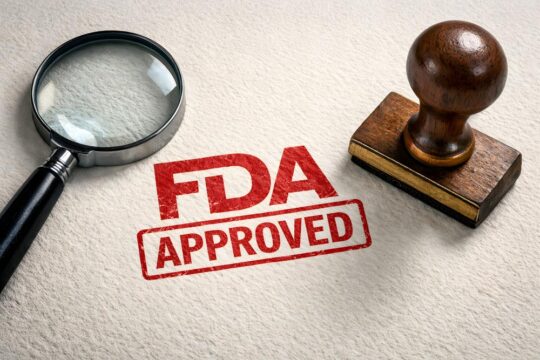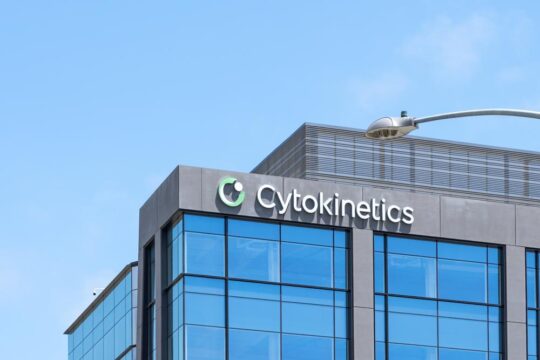Advertisment
EAHP 2012 Report – Report of B Braun satellite symposium

by Christine Clark – Standardised injections could improve patient safety. The B Braun satellite symposium, ‘Is Patient Safety Affordable?’ took place at the European Association of Hospital Pharmacists congress in Milan, Italy on 21st March 2012.
The preparation and administration of intravenous injections involves numerous steps but the reconstitution and dilution stages are associated with the highest error rate, according to Pascal Bonnabry (pictured), Head of Pharmacy, Geneva University Hospitals. “Tackle this and you can eliminate a lot of errors”, he commented.
Errors with parenteral (injectable) products are nearly three times more likely to cause harm or death than other medication errors, according to American reports.
The high probability of error combined with the serious clinical consequences of injecting the wrong product make injections high-risk products.
Calculations are performed poorly in real-life situations. One study analysed the contents of unused syringes of anaesthetic drugs after the surgical sessions had ended. One third of syringes contained drug concentrations with errors of 10% or more and 4% had errors of 100% or more. The widest variations were seen with fentanyl injection. Other studies suggest that microbial contamination of injections prepared in clinical areas varies between 10 and 40%.
The adoption of standardised concentrations and labelling could pave the way for the purchase of ready-to-use (RTU) products from the pharmaceutical industry. However this was a huge task in one institution and it is something that, ideally, needs to be done national or internationally, acknowledged Professor Bonnabry. Currently, a small number of RTU injections is available, including bupivacaine for epidural use and morphine for patient-controlled analgesia.
At Geneva University Hospitals a list of drugs required in a RTU or ready-to-administer (RTA) form was compiled. These were risk-assessed in order to determine a priority order. The feasibility of batch production was then evaluated and unstable products were rejected. Products that are stable from four-12 months are considered suitable for batch production. Currently, about 30,000 doses are batch-produced each year. The top three products are phenylephrine 1mg in 10ml, insulin 50 units in 50ml and suxamethonium 100mg in 10ml.
Good Manufacturing Practice
Professor Bonnabry said that the implications of Good Manufacturing Practice (GMP) should be explained and demonstrated to nurses to help them to understand that RTU injections represent a change of paradigm. GMP improves safety by reducing the opportunities for errors through good procedures, computer-assisted production management and the use of aseptic facilities. In addition, chemical and microbiological quality controls ensure that errors are intercepted before they reach patients. A recent study in Germany showed that 5% of injections made by automated systems in the pharmacy deviated from the stated concentration by more than 10%, compared with 22% of those made manually in the intensive care unit. Aseptic preparation in Geneva University Hospital is undertaken in a Class C (ISO 7) GMP clean room. Isolators are sterilised with hydrogen peroxide and a ‘Smartfiller’ pump is used to fill syringes. Simulation studies have shown that injections prepared in clean room have a 0% microbial contamination rate compared with 6% for operating room and 16% for wards.
Pharmacoeconomics
Costs could be modelled to take into account the investment costs of a clean room and equipment, development costs, such as stability studies, and costs of preparation. Using phenylephrine as an example and taking a five-year time horizon, he calculated that for 30,000 syringes per year, the cost per syringe was €5.30, compared with €6.90 for ward-based preparation. This included an estimate of cost avoidance as a result of serious adverse events avoided but did not include the cost-saving that would be made by reducing the numbers of syringes prepared in advance by anaesthetists but discarded unused at the end of an operating session.
Safer infusion therapy
Errors occurring during the preparation and administration of injectable medication on wards are unlikely to be recognised or intercepted, according to Peter Keeling (consultant anaesthetist, Frimley Park Hospital, UK ). Errors in prescribing, preparation and administration of injectable medicines, including calculation errors, are more common than with other medicines.
In the UK, the National Patient Safety Agency (NPSA) had recommended that risk assessments be undertaken for all injectable medicines and that essential technical information, for example, about reconstitution and dilution, be available at the point of use. The NPSA also recommended the use of RTA or RTU injections of standard strengths. The main barrier to the introduction of standardised injections is variations in clinical practice, explained Dr Keeling. A recent survey of 154 intensive care units in the UK had revealed wide variations in the concentrations and presentations of common injections. For example, no fewer than 23 different concentrations of phosphate injection were in use. A subsequent survey had established that there was about 74% agreement for standardised concentrations of about 20 drugs. As a result, the Intensive Care Society in the UK has now published on its website a list of 16 drugs with recommended standard concentrations.
The use of standardised concentrations would allow the preparation of dosage and demonstration charts to simplify prescribing and administration, said Dr Keeling. There would also be safety benefits because nurses and doctors would not need to familiarise themselves with new protocols – with the attendant risk of errors – as they move from one ward or unit to another, he added. In future stable injections of standardised concentrations with bar-coded labels should be available from the pharmaceutical industry. These could then be administered using smart pumps with dose-checking software.
In closing the symposium, the chairman, Laurence Goldberg reiterated the take-home messages from the two speakers:
- Identify high-risk injectable drugs
- Simplify and rationalise the range and presentation of these high-risk injectable drugs
- Provide, where possible, high-risk injectable drugs in a ready-to-use or ready-to-administer form
- Prepare injectable drugs in a GMP-compliant hospital facility or outsource them from the pharmaceutical industry
- Consider the use of ‘smart’ pumps for the administration of high-risk injectable drugs.
Mr Goldberg concluded that patient safety is affordable but that pharmacists will need to ensure that a sound business case is presented to hospital management boards.





